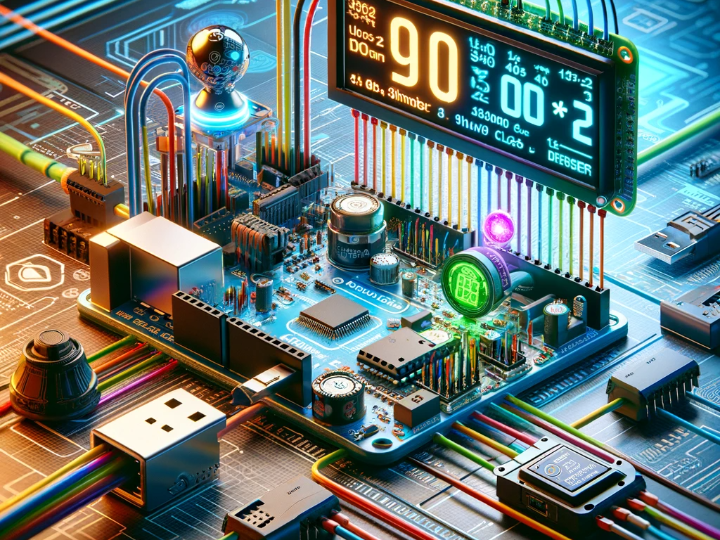Unveiling the LCD-Meter: A Convergence of Arduino and WIZnet Technology for Environmental Monitoring
Explore the LCD-Meter project, an Arduino-based system for environmental monitoring, featuring WIZnet's Ethernet technology for enhanced connectivity.

In the ever-evolving landscape of IoT and environmental monitoring, the "LCD-Meter" project by island2000dk stands out as a beacon of innovation. This Arduino-based system, designed to measure temperature and humidity, integrates an LC display and a webserver for data upload. It's a striking example of how combining simple hardware with sophisticated software can lead to powerful applications in environmental monitoring.
Core Components and Connectivity
The LCD-Meter project is built on a foundation of accessible and reliable components, making it an ideal project for enthusiasts and educators alike.
Key Hardware Components
- Arduino UNO or Similar: The brain of the operation, providing a versatile and user-friendly platform for programming and data processing.
- Ethernet Shield (W5100 type): Facilitating network connectivity, this component is crucial for transmitting data to the webserver.
- DHT22 Temperature/Humidity Sensor: Offers accurate and reliable readings of environmental conditions.
- DS3231 Realtime Clock Module: Ensures time-stamped data logging, essential for tracking and analyzing environmental trends.
- 16x2 LCD Module: Provides a real-time display of the sensor readings, enhancing the user interface.
Connectivity and Setup
- I2C and SPI Protocols: These protocols are used for connecting the LCD, realtime clock, and Ethernet module, ensuring efficient communication between components.
- Simple and Intuitive Wiring: The project requires basic connections with +5V and GND, along with specific data connections to the Arduino pins, making it accessible for beginners.
Software: The Heart of LCD-Meter
The software aspect of the LCD-Meter is as crucial as its hardware. It's where the raw data from sensors are transformed into meaningful information.
Arduino Software Implementation
- Standard Libraries: Utilizing libraries like Wire.h, LiquidCrystal_I2C.h, DS3231.h, DHT.h, SPI.h, and Ethernet.h, the Arduino script reads sensor data, manages time, displays information on the LCD, and communicates with the webserver.
- Web Client Creation: A simple web client is created to deliver data to the webserver via HTTP GET requests, making the data accessible remotely.
Server-Side Software
- PHP Scripting: The server-side PHP script (sensor.php) receives data and writes it into .csv files for easy access and archiving.
- Web Interface: Data can be viewed through a web interface, with settings and formatting managed by additional PHP and CSS files.
WIZnet's Role in Enhancing the LCD-Meter
The integration of WIZnet's W5100 Ethernet shield is a testament to the project's robust connectivity and data transmission capabilities.
Stable and Efficient Internet Connectivity
WIZnet's Ethernet shield ensures that the LCD-Meter remains consistently connected to the network, crucial for real-time data monitoring and uploading.
Ease of Integration and Use
Known for its compatibility and user-friendliness, the W5100 Ethernet shield makes the LCD-Meter accessible to a broader range of users, from hobbyists to educators.
Reliable Data Transmission
The shield facilitates fast and secure data transmission, essential for applications in environmental monitoring where real-time data accuracy is critical.
Conclusion
The LCD-Meter project is a shining example of how technology can be harnessed to better understand and monitor our environment. By combining the versatility of Arduino with the reliability of WIZnet's Ethernet technology, this project not only simplifies environmental monitoring but also opens up new avenues for education and IoT applications. It stands as a testament to the power of integrating simple, accessible technology to create sophisticated and impactful solutions.
